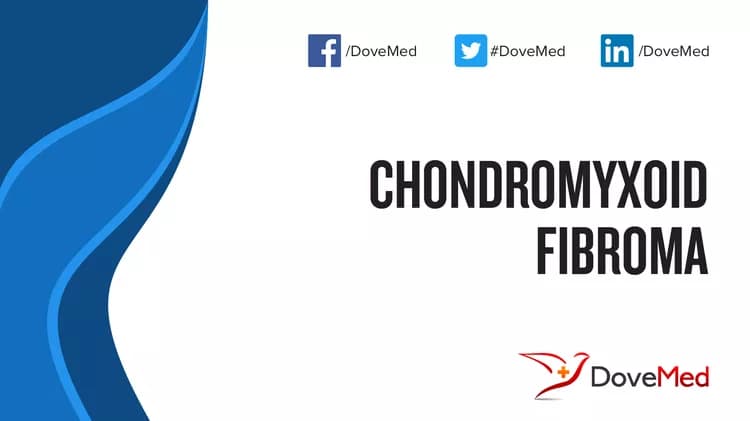What are the other Names for this Condition? (Also known as/Synonyms)
- CMF (Chondromyxoid Fibroma)
What is Chondromyxoid Fibroma? (Definition/Background Information)
- Chondromyxoid Fibroma (CMF) is a benign tumor of the cartilage. It is an extremely rare tumor that accounts for less than 1% of all bone tumors described in medical literature
- Many of the individuals with Chondromyxoid Fibroma do not exhibit any pain. In some, the tumors are asymptomatic and often diagnosed incidentally on radiological studies that were undertaken for unrelated conditions
- Occasionally, the tumors can be painful resulting in bone pain. Large tumors can result in bone swelling and bone deformities. In some individuals, the presence of tumor can weaken the bone resulting in easy bone fractures (pathologic fractures)
- The treatment measures may involve a ‘wait and watch’ approach, or surgical excision, when needed. In most cases, the prognosis of Chondromyxoid Fibroma is excellent
Who gets Chondromyxoid Fibroma? (Age and Sex Distribution)
- Chondromyxoid Fibroma can occur at any age. The peak incidence of the tumor is in the 2nd and 3rd decades (between ages 11 and 30 years)
- Both males and females are affected with a slight predilection observed towards males (male-female ratio is 2:1)
What are the Risk Factors for Chondromyxoid Fibroma? (Predisposing Factors)
- Currently, no risk factors have been identified for Chondromyxoid Fibroma
It is important to note that having a risk factor does not mean that one will get the condition. A risk factor increases one’s chances of getting a condition compared to an individual without the risk factors. Some risk factors are more important than others.
Also, not having a risk factor does not mean that an individual will not get the condition. It is always important to discuss the effect of risk factors with your healthcare provider.
What are the Causes of Chondromyxoid Fibroma? (Etiology)
The exact cause of Chondromyxoid Fibroma tumor formation is unknown.
- Experts believe that the tumor arises due to abnormalities in bone growth during fetal development
- Studies have documented genetic abnormalities consisting of gene fusion and gene translocation
- Most cases are characterized by GRM1 gene fusion or promoter swapping. It can be associated with a translocation at t(1;5)(p13;p13)
What are the Signs and Symptoms of Chondromyxoid Fibroma?
Many of the individuals with Chondromyxoid Fibroma do not exhibit signs and symptoms; the vast majority of the tumors being small.
- In a majority of cases, the pain is mild. In some individuals the pain can be severe and disabling. The tissue surrounding the tumor may show swelling and tenderness
- Some individuals with the tumor may experience increasing pain and restricted mobility of the affected limb, especially when the bones of the hand and feet are affected
- Chondromyxoid Fibroma commonly affects the long bones. Occasionally the tumors may be large enough to extend to the nearby joint affecting the mobility of the joint. The common bones involved are the tibia (shinbone), femur (thighbone) and pelvic bones. Very rarely, the bones of the skull may be affected
- When the tumor involves the finger or toe bones, enlargement of the affected digit can be seen
- Large tumors can result in bone swelling, bone pain, and bone deformities
- In some individuals the presence of tumor can weaken the bone resulting in bone fractures (pathologic fractures)
In most individuals, there is the presence of a single tumor; however, some individuals rarely have multiple tumors. The average size of the tumor is 2-3 cm; although in some cases, the tumors may be as large as 6 cm.
How is Chondromyxoid Fibroma Diagnosed?
Chondromyxoid Fibroma may be diagnosed by the following observations and tests:
- X-ray of the affected bone
- MRI of the affected bone
- CT-scan of the affected region
- Radionuclide bone scans: Bone scan can help rule out fractures and bone infections
- A differential diagnosis to eliminate other tumor types should be considered before arriving at a definitive diagnosis. The differential diagnosis may include:
- Low-grade chondrosarcoma
- Periosteal myxoma
- Synovial chondromatosis
- Periosteal chondrosarcoma
- Periosteal osteosarcoma
- Chondroblastoma
- Enchondroma
- Chondroblastic osteosarcoma
- Chondrosarcoma
Note: On radiological studies, these tumors appear as “hot spots”.
Many clinical conditions may have similar signs and symptoms. Your healthcare provider may perform additional tests to rule out other clinical conditions to arrive at a definitive diagnosis.
What are the possible Complications of Chondromyxoid Fibroma?
In a vast majority of cases of Chondromyxoid Fibroma, there are no significant complications.
- In some individuals, who undergo surgery to remove the tumor, the surgical site may get infected
- Recurrent Chondromyxoid Fibroma: In approximately 15% of the individuals with CMF, the tumor can recur on removal. In such cases, a re-excision of the tumor may be performed
- Rarely, the tumor may undergo malignant degeneration resulting in a chondrosarcoma (a malignant tumor)
How is Chondromyxoid Fibroma Treated?
- The treatment of Chondromyxoid Fibroma is determined by a variety of factors including:
- The individual’s age
- Overall health condition
- Asymptomatic tumors may not require any treatment; close monitoring is often adequate. Reassuring the individual is also very helpful
- In symptomatic cases, when it causes bone pain, the tumor can be treated with bone curettage (tumor removal by scraping the bone)
- Large tumors may require bone grafting
How can Chondromyxoid Fibroma be Prevented?
Current medical research has not established a method of preventing Chondromyxoid Fibroma formation.
What is the Prognosis of Chondromyxoid Fibroma? (Outcomes/Resolutions)
- The prognosis is excellent in majority of cases upon complete removal/bone curettage
- Although, in a vast majority of individuals, no treatment is generally required for Chondromyxoid Fibroma
Additional and Relevant Useful Information for Chondromyxoid Fibroma:
Please visit our Cancer & Benign Tumor Health Center for more physician-approved health information:
Related Articles
Test Your Knowledge
Asked by users
Related Centers
Related Specialties
Related Physicians
Related Procedures
Related Resources
Join DoveHubs
and connect with fellow professionals


0 Comments
Please log in to post a comment.